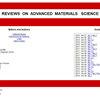智能技术和纺织品及其在老年人护理和支持方面的潜在用途和应用:系统综述
IF 3.6
4区 材料科学
Q2 MATERIALS SCIENCE, MULTIDISCIPLINARY
引用次数: 0
摘要
人口结构的变化正在导致社会老龄化。与此同时,技术进步也在改变对老龄人的护理和医疗方式。为此,最近开发出了一些智能可穿戴设备和服装。根据以往的研究,我们发现在使用智能服装护理和支持老年人方面还存在研究空白,特别是在具体的应用潜力和示例产品方面。本研究的目的是概述智能服装的最新研究和发展,重点关注老年人的可用性和接受度。我们使用一组预定义的关键词在五个数据库中进行了系统的文献检索。共识别并评估了 169 篇发表于 2000 年 1 月 1 日至 2023 年 2 月 2 日期间的文章。文献检索按照事先准备好的研究方案进行,符合系统文献检索的标准。智能服装的研究领域正在不断扩大,其中智能衬衫是研究的重点,但其他产品也在研究之中,每种产品都具有特定的功能。特别是,生命参数正在不断优化;根据其对老年人的潜在适用性,对具有代表性的产品进行了描述和评估。智能服装未来在医疗保健领域的应用前景广阔。许多关于智能纺织品基本应用的研究已经完成,一些研究已经涉及老年人。此外,我们还根据研究文献,对智能可穿戴设备的可能分类以及智能服装作为一种子类型提出了新的建议。我们发现,人们对智能服装的开发和应用,尤其是在老年环境中的应用,总体印象良好。然而,数据收集、皮肤兼容性、穿着舒适度以及将老年病因素纳入已知接受模型等方面还需要进一步研究。在过去二十年里,智能服装领域取得了许多发展。对于老年人的护理和支持而言,智能服装是一项具有巨大潜力的重要发展。要充分满足老年人的特殊需求,还需要不断改进这些产品。本文章由计算机程序翻译,如有差异,请以英文原文为准。
Smart technologies and textiles and their potential use and application in the care and support of elderly individuals: A systematic review
Demographic change is causing society to age. At the same time, technological progress is changing the way ageing individuals are cared for and medically treated. Several smart wearables and garments have recently been developed for this purpose. Based on previous research, we see a research gap in the use of smart clothing in the care and support of elderly people, especially with regard to concrete application potentials and example products. The aim of this study was to provide an overview of the latest studies and developments in smart clothing with a focus on usability and acceptance for an elderly individuals. A systematic literature search was performed in five databases using a predefined set of keyword. A total of 169 articles published between 1/2000 and 2/2023 were identified and assessed. The literature search followed a previously prepared research protocol according to the criteria of a systematic literature search. The research field of smart clothing is expanding with smart shirts being a major focus; however other products are also being investigated, each with specific capabilities. In particular, vital parameters are constantly optimized; representative products are described and assessed according to their potential applicability to elderly people. The future applications of smart clothing in health care are promising. Many studies on basic applications of smart textiles have been done, and some studies have already involved older people. Furthermore, newly developed suggestions for possible categorizations of smart wearables as well as smart clothing as a subtype are presented based on the researched literature. We found an overall positive impression of the development and application of smart clothing, especially in geriatric settings. However, aspects such as data collection, skin compatibility, wearing comfort, and integration of geriatric factors into known acceptance models need further investigation. Over the last two decades, there have been many developments in the field of smart clothing. For the care and support of elderly people, smart clothing is an important development with great potential. Continued advancement in these products is needed to adequately address the special needs of older people.
求助全文
通过发布文献求助,成功后即可免费获取论文全文。
去求助
来源期刊

Reviews on Advanced Materials Science
工程技术-材料科学:综合
CiteScore
5.10
自引率
11.10%
发文量
43
审稿时长
3.5 months
期刊介绍:
Reviews on Advanced Materials Science is a fully peer-reviewed, open access, electronic journal that publishes significant, original and relevant works in the area of theoretical and experimental studies of advanced materials. The journal provides the readers with free, instant, and permanent access to all content worldwide; and the authors with extensive promotion of published articles, long-time preservation, language-correction services, no space constraints and immediate publication.
Reviews on Advanced Materials Science is listed inter alia by Clarivate Analytics (formerly Thomson Reuters) - Current Contents/Physical, Chemical, and Earth Sciences (CC/PC&ES), JCR and SCIE. Our standard policy requires each paper to be reviewed by at least two Referees and the peer-review process is single-blind.
 求助内容:
求助内容: 应助结果提醒方式:
应助结果提醒方式:


